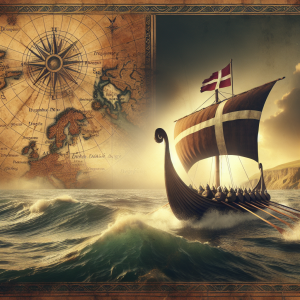The Rich History of Danish Royal Palaces
As a Danish native, I have always been captivated by the rich history and culture that surrounds the Danish royal palaces. These beautiful and historic buildings have been at the center of Danish culture for centuries, and their influence can still be felt today.
Rosenborg Slot
One of the most iconic of the Danish royal palaces is Rosenborg Slot, located in the heart of Copenhagen. Built in the early 17th century by King Christian IV, Rosenborg Slot was initially intended as a summer residence for the royal family. The beautiful Dutch Renaissance design of the palace, with its copper-clad roof and stunning gardens, is a testament to the opulence of the time.
Today, Rosenborg Slot is open to the public, allowing visitors to explore the lavishly decorated rooms and marvel at the priceless treasures housed within. One of the most popular attractions at Rosenborg Slot is the Crown Jewels, including the famous Crown of King Christian IV and the dazzling Danish Crown Regalia. These magnificent artifacts are a testament to the wealth and power of the Danish monarchy throughout history.
Amalienborg Slot
Another must-see royal palace in Denmark is Amalienborg Slot, which serves as the official residence of the Danish royal family today. The palace complex consists of four identical rococo-style buildings surrounding an octagonal courtyard, creating a truly picturesque setting.
As a Danish citizen, I have had the opportunity to witness the changing of the guard at Amalienborg Slot, a tradition that takes place daily and draws crowds of spectators. The Danish Royal Life Guard, dressed in their distinctive bearskin hats and blue uniforms, parade through the streets of Copenhagen before ceremonially handing over the guard duty to their colleagues. This tradition is a vibrant example of Danish culture and history, and it is a sight not to be missed.
Kronborg Slot
Kronborg Slot, located in the port town of Helsingør, is another iconic Danish royal palace with a storied history. This imposing Renaissance castle is perhaps best known as the setting for William Shakespeare’s play, “Hamlet,” and it continues to draw visitors from around the world who are eager to explore its atmospheric chambers and passageways.
One of the highlights of a visit to Kronborg Slot is the Casemates, an extensive network of underground tunnels and chambers that once housed soldiers and provided strategic defense for the castle. The eerie and evocative atmosphere of the Casemates is a memorable experience for visitors, and it offers a fascinating glimpse into the military history of Denmark.
The Contemporary Significance of Danish Royal Palaces
While Danish royal palaces are undeniably steeped in history, they also play a vital role in contemporary Danish culture. The royal family is held in high esteem by many citizens, and the palaces themselves continue to serve as important symbols of national identity and tradition.
Preservation of Cultural Heritage
- Palaces like Rosenborg Slot and Kronborg Slot serve as living museums, preserving centuries of art, architecture, and historical artifacts for future generations to appreciate. The meticulous preservation and restoration efforts that go into maintaining these palaces are a testament to Denmark’s commitment to honoring its cultural heritage.
- Amalienborg Slot, as the official residence of the royal family, remains an active center of Danish national life. State visits, official receptions, and public appearances by the royal family all take place within the walls of Amalienborg Slot, reinforcing its status as a contemporary symbol of Danish unity and pride.
Tourism and Economic Impact
The Danish royal palaces also make a significant contribution to the country’s tourism industry, attracting visitors from around the world who are eager to explore these historic sites. The economic impact of royal palace tourism cannot be overstated, as it supports jobs, stimulates local economies, and promotes cultural exchange.
As a Danish citizen, I am proud to see the enthusiasm and curiosity that foreign visitors bring to our royal palaces. Their interest in Danish history and culture helps to foster international understanding and appreciation for the unique heritage of Denmark.
Conclusion
For me, the Danish royal palaces are more than just beautiful buildings; they are living symbols of the rich and diverse history of Denmark. From the opulence of Rosenborg Slot to the stately elegance of Amalienborg Slot, these palaces continue to captivate and inspire visitors from around the world.
As a Danish native, I take great pride in the cultural heritage that is preserved and celebrated within the walls of these historic buildings. The royal palaces serve as a powerful reminder of the enduring influence of Danish monarchy and the importance of honoring our past while embracing the future.
When you visit Denmark, be sure to explore the royal palaces and immerse yourself in the history and culture that they represent. The Danish royal palaces are a true treasure, and they offer an unforgettable glimpse into the heart and soul of my beloved country. Velkommen til Danmark! (Welcome to Denmark!)





